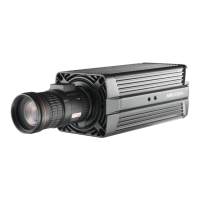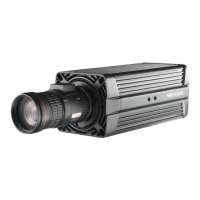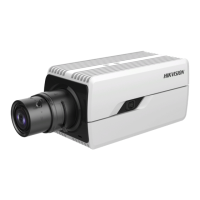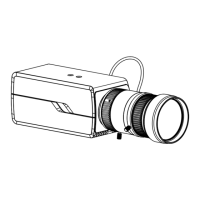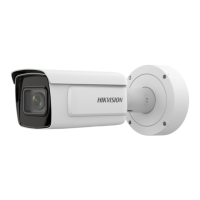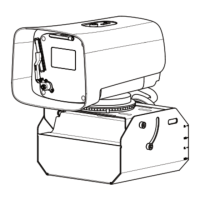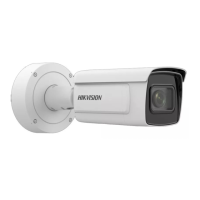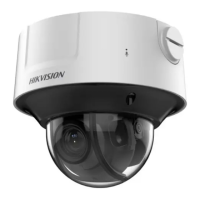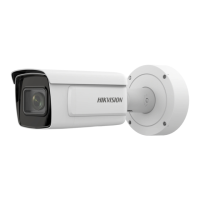Do you have a question about the HIKVISION iDS-2CD9396-BIS and is the answer not in the manual?
| Minimum Illumination | Color: 0.005 Lux @ (F1.6, AGC ON), B/W: 0.001 Lux @ (F1.6, AGC ON) |
|---|---|
| Video Compression | H.265+/H.265/H.264+/H.264 |
| Bit Rate | 32 kbps to 16 Mbps |
| Operating Conditions | Humidity: 95% or less (non-condensing) |
| Protection Level | IP67 |
| Max Resolution | 3840 × 2160 |
| Focal Length | 2 mm |
| Aperture | F1.6 (wide)–F3.4 (tele) |
| Day/Night | ICR |
| Frame Rate | 50Hz: 25fps (3840 × 2160), 60Hz: 30fps (3840 × 2160) |
| Audio | Built-in microphone |
| Network Interface | 1 x RJ45 10M/100M Ethernet |
| Power Supply | 12 VDC ± 25% |
| Power Consumption | 13W (PoE) |
| Operating Temperature | -30 °C to +60 °C |
| Smart Feature-set | Perimeter Protection |
| Image Sensor | 1/1.8" CMOS |
| Lens | Motorized lens |
Details FCC compliance and conditions for digital devices.
Outlines compliance with EU directives and WEEE/battery disposal.
States compliance with Industry Canada standards.
Emphasizes compliance with local laws and electrical safety regulations.
Provides guidelines for safe power supply usage and connections.
Covers environmental conditions, handling, and storage best practices for the device.
Details procedures for device maintenance and contacting service centers.
Discusses network security and user responsibilities for data protection.
Warns against disconnecting power during data operations.
Explains physical connection methods for the device to a network.
Outlines the initial activation process for the device.
Describes device activation using a web browser interface.
Details device activation using the SADP software tool.
Explains how to access and log into the device via its web interface.
Describes the interface for viewing real-time video streams and capturing images.
Instructions on how to initiate the live view function.
How to manually record video and capture still images from the live feed.
Accessing real-time status and traffic flow data.
Configuration of areas for capturing scene shots and arming modes.
Displays current traffic light status, applicable in E-police mode.
How to view and analyze real-time traffic flow and occupancy data.
How to search for captured images based on various criteria and export them.
Settings related to live view, record files, and captured pictures.
Configures protocol, performance, and rule/feature information for live view.
Defines saving paths for recorded video files and picture/clip settings.
How to access and view basic device details and firmware versions.
Configuration of RS-485 and RS-232 serial port parameters.
Configuring network settings like Dual-NIC, IPv4/IPv6.
Configuration of HTTP, RTSP, SDK, and SADP ports.
Setting up Dynamic DNS for remote access.
Configuring the EHome protocol for remote platform access and control.
Steps to create and install certificates for secure HTTPS access.
Configuring time synchronization via NTP or manual settings.
How to enable and configure Daylight Saving Time settings.
Configures user lock features and other service settings.
Setting up main, sub, and custom video streams with various encoding parameters.
Configuration for capture resolution and JPEG picture size.
Explains ROI encoding for discriminating interest regions in video compression.
Setting up scheduled recording and overwriting options.
Managing storage, formatting TF cards, and viewing HDD information.
Configuring FTP server settings for picture uploading.
Enabling and configuring cloud storage for pictures and license plates.
Configuring protocols for uploading license plate and mixed target information.
Setting overlay information like percentage, font size, and color for captured pictures.
Configuring OSD attributes, size, alignment, and display items.
Overlaying OSD on composed pictures for evidence.
Configuring license plate recognition for front or back plates.
Configuring flash light modes, timing, and compensation.
Synchronizing flash light phase position with traffic lights.
Setting up composed images for evidence, including zoom and offset.
Enabling vehicle feature detection like color recognition and car logo.
Configuring dual-shutter settings for preview and recording streams.
Adjusting image parameters like saturation, sharpness, and white balance.
Setting video image parameters like brightness, contrast, and DNR.
Configuring image parameters for recorded video, including shutter speed.
Configuring IR Cut Filter modes for day/night switching.
Adjusting light calibration for traffic lights, especially red light enforcement.
Configuring mixed-traffic lane analysis parameters.
Configuring parameters for video analysis in E-Police mode.
Configuring the device to trigger based on external input signals.
Setting up the device to trigger via a vehicle detector.
Selecting RS-485 Radar as a trigger mode for high-accuracy speed detection.
Configuring exception types like HDD error, network disconnection, and IP conflicts.
Viewing the current IP address and status of the device.
Managing user accounts, permissions, and operator settings.
Steps to add new users, set passwords, and assign permissions.
How to edit existing user accounts and their permissions.
Steps to remove user accounts from the system.
Searching and exporting log files for operations, alarms, and exceptions.
How to restart or reboot the camera device.
Restoring factory default settings for the device.
Exporting debug files for troubleshooting purposes.
Importing configuration files for batch setup of multiple cameras.
Performing remote upgrades for the device firmware.


